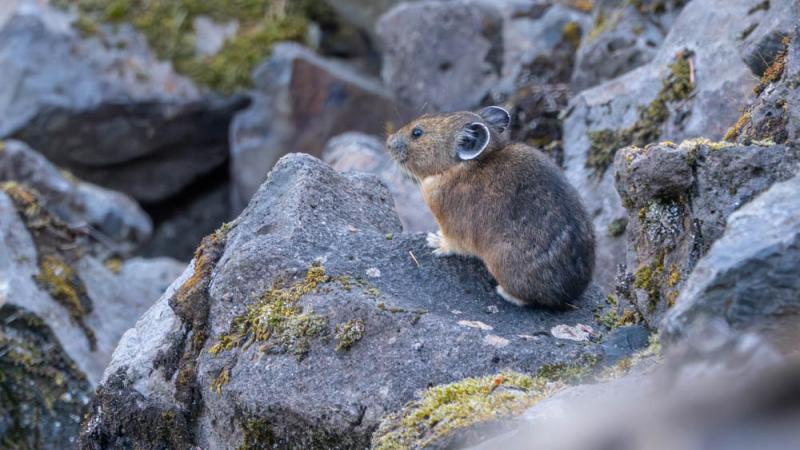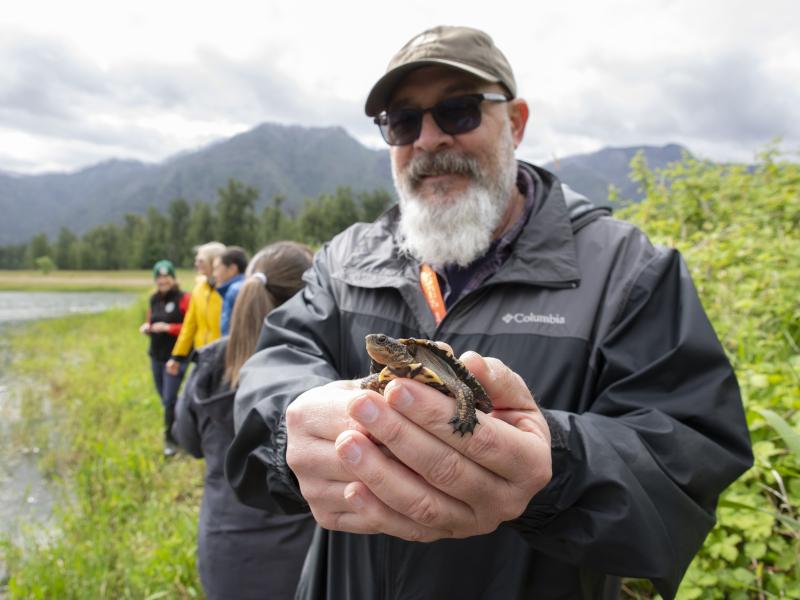New survey shows pikas on the rebound in Columbia River Gorge

Record ‘Pika Watch’ turnout charts species’ recovery following 2017 Eagle Creek fire
In the wake of the 2017 Eagle Creek Fire, conservationists were relieved to learn that one of the Columbia Gorge’s fluffiest residents — the American pika — was still squeaking by. This year, there is even more cause to celebrate: Recent surveys show the tiny animals are making a strong comeback from the fire.
Pikas, potato-sized rabbit relatives known for their distinctive, squeak-toy-like calls, typically live on mountain slopes at elevations above 6,000 feet, but a somewhat anomalous low-elevation population is living at the Columbia Gorge — just a half hour from Portland.
Each summer, volunteers from Cascades Pika Watch — a collaboration of organizations and researchers convened by the Oregon Zoo — head into the field with binoculars and GPS units to stake out pika hot spots, record their locations, and listen for the telltale squeak. Then they upload their data to a website where it’s analyzed by biologists to better understand where pikas live and whether their range is shifting.
Over the past five years, biologists have been especially eager to track how pikas are faring in those areas most affected by the Eagle Creek fire. This year, volunteers reported pikas at 23 out of 31 sites surveyed, an increase of more than 50% since 2018.
“The population in those areas hasn’t quite reached its pre-fire distribution, but it’s getting close,” said Dr. Johanna Varner, scientific adviser for Pika Watch program. “This is very encouraging news for everyone monitoring the Gorge pika population.”
In addition to the reported increase in pikas reported this year, Cascades Pika Watch benefitted from a record number of volunteers: 168 trained citizen scientists spent 1,620 hours searching for the tiny mammals. No easy feat, considering how difficult pikas can be to spot.
“Because they are small and blend in so well with their rocky habitat, they can be hard to find,” Varner said. “Especially if you don’t know what to look — or listen — for. We’re extremely grateful to have so many dedicated volunteers who are trained to find them.”
Cascades Pika Watch will return next year, and aspiring pika watchers are encouraged to sign up for a free in-person or online training. Sites are accessed via public hiking trails, and no special skills are required. The training schedule will be announced in spring 2024.
More News

Tiny Endangered Turtle Hatchlings Arrive At Zoo
Seventeen northwestern pond turtle hatchlings, each about the size of a walnut, are making themshellves at home at the Oregon Zoo this summer.June 4, 2025

Awesome opossum! Orphaned baby finds new home at zoo
A tiny opossum found wandering earlier this month has made his way to a new home at the Oregon Zoo.May 28, 2025

Zoo, partners return 19 endangered turtles to wild
Zoo-reared northwestern pond turtles are released in the Columbia River Gorge It was a shell-ebration last week for 19 northwestern pond turtles reared at the Oregon Zoo. In addition to partners from the Washington Department of Fish & Wildlife and U
May 19, 2025

